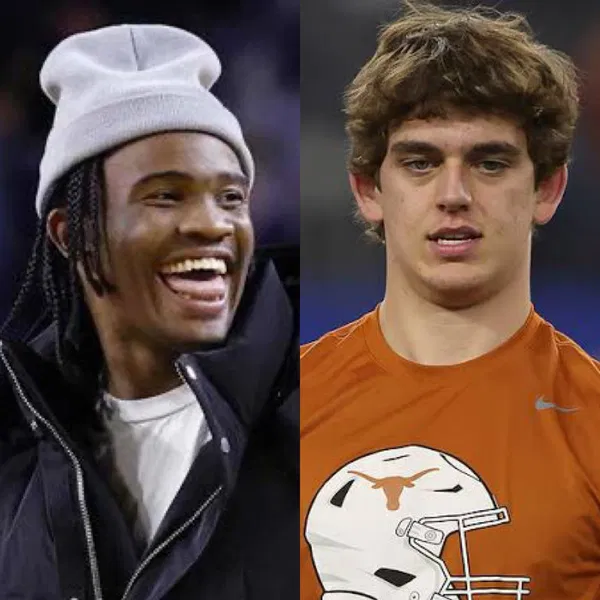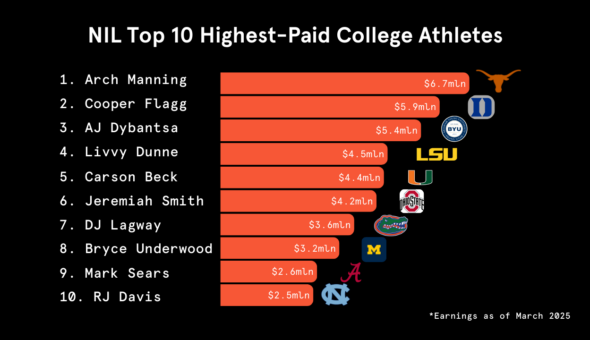In July 2025, the NCAA implemented a historic change: colleges can now directly compensate student athletes, with revenue-sharing payouts of up to $20.5 million per year per Power Five school, primarily funded by football revenue . The goal is to bridge the gap left by traditional NIL collectives—third-party boosters or sponsors—but under stricter oversight. Experiments in revenue-sharing began earlier in June through a $2.8 billion settlement .
A key addition is the requirement for large NIL deals (over $600) to register with a Deloitte-managed “NIL Go” clearinghouse, ensuring validation and fair-market compliance . With these changes, a college athlete can receive compensation directly from their school while still maintaining separate NIL deals.
💵 Money in Motion: Collectives vs. School Payments
- NIL collectives: Independent groups that fund athlete deals—still prevalent—but under increased NCAA scrutiny to avoid paid recruitment without purpose .
- Direct school payouts: New revenue-sharing model eligible for most Power Five football programs, giving players a stake in their school’s financial success.
This dual structure could mean that in the 2025 football season, a top athlete may pull in $3 million–$7 million via combined school and collective payments.

🏅 Top 5 NIL Football Earners to Watch in Fall 2025
According to NILValuations (On3, updated July 10):
| Rank | Player | Position | School | VALUATION (approx.) |
|---|---|---|---|---|
| 1 | Arch Manning | QB | Texas | $6.8 M |
| 2 | Carson Beck | QB | Miami (FL) | $4.3 M |
| 3 | Jeremiah Smith | WR | Ohio State | $4.2 M |
| 4 | Garrett Nussmeier | QB | LSU | $3.8 M |
| 5 | LaNorris Sellers | QB | South Carolina | $3.7 M |
More details on elite earners:
- Arch Manning (Texas QB): The highest-valued NIL athlete at ~$6.8M. His backing by major brands like EA Sports, Vuori, and Red Bull shows commercialization growth .
- Carson Beck (Miami QB): A massive $4.3M valuation—likely boosted by a rumored $3–4M collective deal linked to his transfer .
- Jeremiah Smith (Ohio State WR): A standout with a $4.2M brand value and massive Instagram following .
- Garrett Nussmeier (LSU QB): Coming in at $3.8M, reflecting success on the field and endorsement interest .
- LaNorris Sellers (South Carolina QB): Valued at $3.7M—after reportedly turning down an $8M transfer NIL deal in favor of staying at USC .
These players form the nucleus of NIL football wealth heading into the 2025 season, now potentially earning even more through direct school compensation under the NCAA’s new rules.
💰 What This Means for Athlete Earnings
- Top-tier athletes, especially QBs and standout wideouts, can command annual earnings reaching $7–10 million, bridging NIL and school revenue-sharing.
- Revenue-share payouts could match existing NIL deals—Cash is no longer limited to boosters.
- Female and non-revenue sports remain disadvantaged. The settlement’s head-heavy model for football raises Title IX equity concerns, as highlighted in ongoing lawsuits .
⚖️ Title IX & Equity Under Fire
While the rules enable massive payouts in football, eight women athletes have filed lawsuits, stating football’s dominance exacerbates inequality—Title IX mandates gender equity in college athletics federally .
Unless revenue-sharing includes women’s sports, the NCAA faces continued legal challenges and pressure to broaden coverage beyond football.
🔍 The Evolving NIL Ecosystem
- Dual payment paths: Collectives remain viable, but institutional school funds now provide official pay.
- Compliance mechanisms: Any deal over $600 must clear NIL Go—adding transparency.
- Spotlight on value: Arch Manning isn’t just paying fame; he’s testing how much signature branding is worth.
- Program-level strategy: Schools like Texas and Miami plan to invest heavily in star athletes to stay competitive .

🧠 What This Means for Distinct Athlete
- Athlete empowerment is at peak. Stars like Manning can monetize talent directly—and institutionalize earnings.
- Recruiting stakes have never been higher. Football’s $20M-plus budgets change player expectations and strategy.
- Equality questions loom. Without broadened distribution, Title IX issues will persist.
- Strategic planning matters. Athletes and programs must design sustainable, compliant earnings models.
🔗 Related Reads on Distinct Athlete
➡️ Devin Booker’s Expected $150M Suns Extension and Lifestyle Impact
➡️ Livvy Dunne Denied Babe Ruth’s Apartment: Real Estate Power Moves in College Sports
➡️ Why WNBA Players May Feel Tension Toward Caitlin Clark’s Rapid NIL Rise
💬 Your Turn: Join the Discussion
What’s fair compensation in college sports: NIL only, adding direct pay, or more equity for women’s sports? Could football-centric revenue-sharing cause deeper NCAA divides?
Jump in at @DistinctAthlete on Instagram, X, or Facebook using #NILWealth2025.

